NUS Libraries TEL Imaginarium Escape Room Adventure: Discover Collections through Immersive Learning
23 October 2023
A subway train is mysteriously stuck at an underground station in the middle of Singapore’s oldest metro line, Bishan Station. Is it a creepy coincidence that the station sits on a historical graveyard, or something more sinister? Will you uncover the ghostly mystery impeding the train’s journey, or remain trapped aboard the train forever?
No, this isn’t the plot for Netflix’s latest horror flick, but the storyline for a Halloween Escape Room, which National University of Singapore Libraries (NUSL) has organised every October, since 2020. Besides being a lot of good fun, it’s also a great vehicle to showcase how NUSL harnesses technology to augment and enhance the university learning experience.
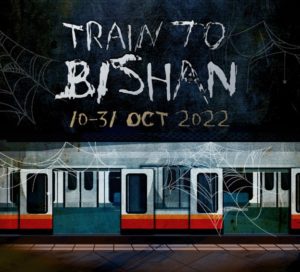
Showcasing Tech-Enhanced Learning and Collections through Puzzle-Solving
Escape Room participants immerse themselves in a Halloween-themed story, carefully crafted by the librarians at NUSL’s Technology Enhanced Learning Imaginarium (TEL Imaginarium). The Imaginarium forms part of NUSL’s Tech Central hub for learning and innovating with emerging technologies such as Augmented Reality (AR), Virtual Reality (VR), digital maps, and immersive media at the 360imx facility.
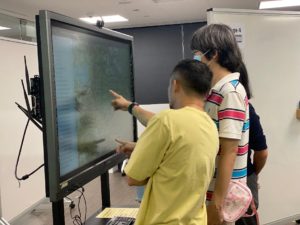
As with typical Escape Room activities, participants are tasked with solving a series of puzzles to unravel a broader mystery. However, the NUSL team adds its own special twist by incorporating AR and VR elements, as well as NUSL’s own library collections.
“The Escape Room format gives us an opportunity to tangibly demonstrate how the digital and immersive technology available at Tech Central can really enhance the learning experience,” said Dr Magdeline Ng, Cluster Head for NUSL’s Digital Strategy and Innovation Cluster, adding, “It also gives us a chance to let our community experience our wider collections in a different context and show how technology enables us to look at topics in a fresh way.”
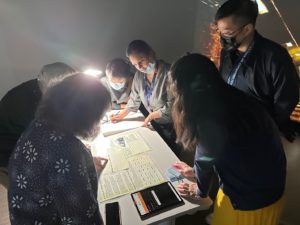
One example of how the team did this was through the use of AR technology on NUSL’s digital map portal. Participants had to browse a digital map collection, identify and scan a specific map with a custom-built app in order to uncover a clue. Through this activity, NUSL was able to showcase its digital maps portal and how AR technology can enhance existing images by adding a virtual overlay of additional information and rich media.
Modeling Life-Long Learning
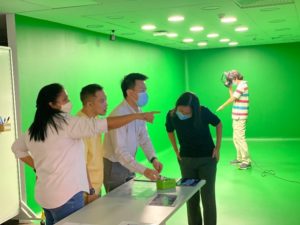
Beyond applying new technologies to practical learning, the NUSL team was also able to demonstrate life-long learning, by picking up development skills and building custom apps – such as an AR app developed in Unity, which was used for the Train to Bishan Escape Room event. The team’s belief is that if librarians of varying academic backgrounds and abilities can learn to develop apps, everyone else can.
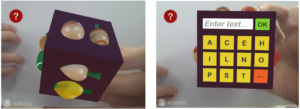
Making an Impact in our Campus Community
Suffice to say that the Escape Room concept has been a resounding success with the NUS community – with participant bookings flooding in at launch, with all game slots fully reserved in no time. Feedback from participants has been overwhelmingly positive, with many saying that the activity made them think about how the technology could be used for their own teaching and learning! The team has since worked with interested academics to develop new activities and apps to complement their teaching, and even embark on research projects!
Staff and faculty have also requested to incorporate the tech-enabled Escape Room into their own team building activities, which is a natural fit given how the Escape Room provides a platform for new teams to see how their colleagues and peers problem-solve under pressure.
Most notably, participants have returned annually to engage with new Escape Room concepts, and some have even volunteered to craft new stories for future iterations. Looks like the NUSL team won’t be escaping from this activity any time soon!
Contributed by NUS Libraries